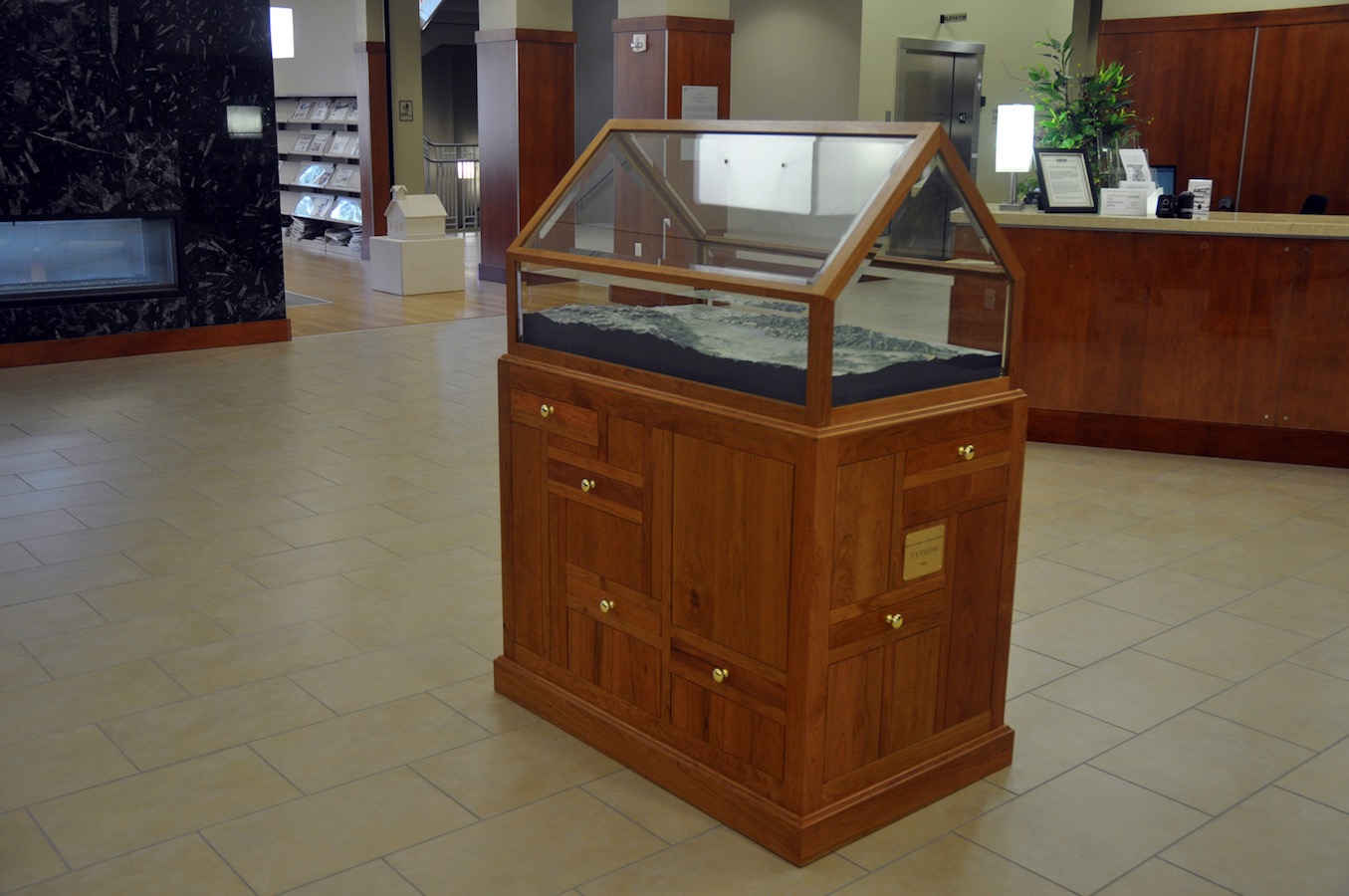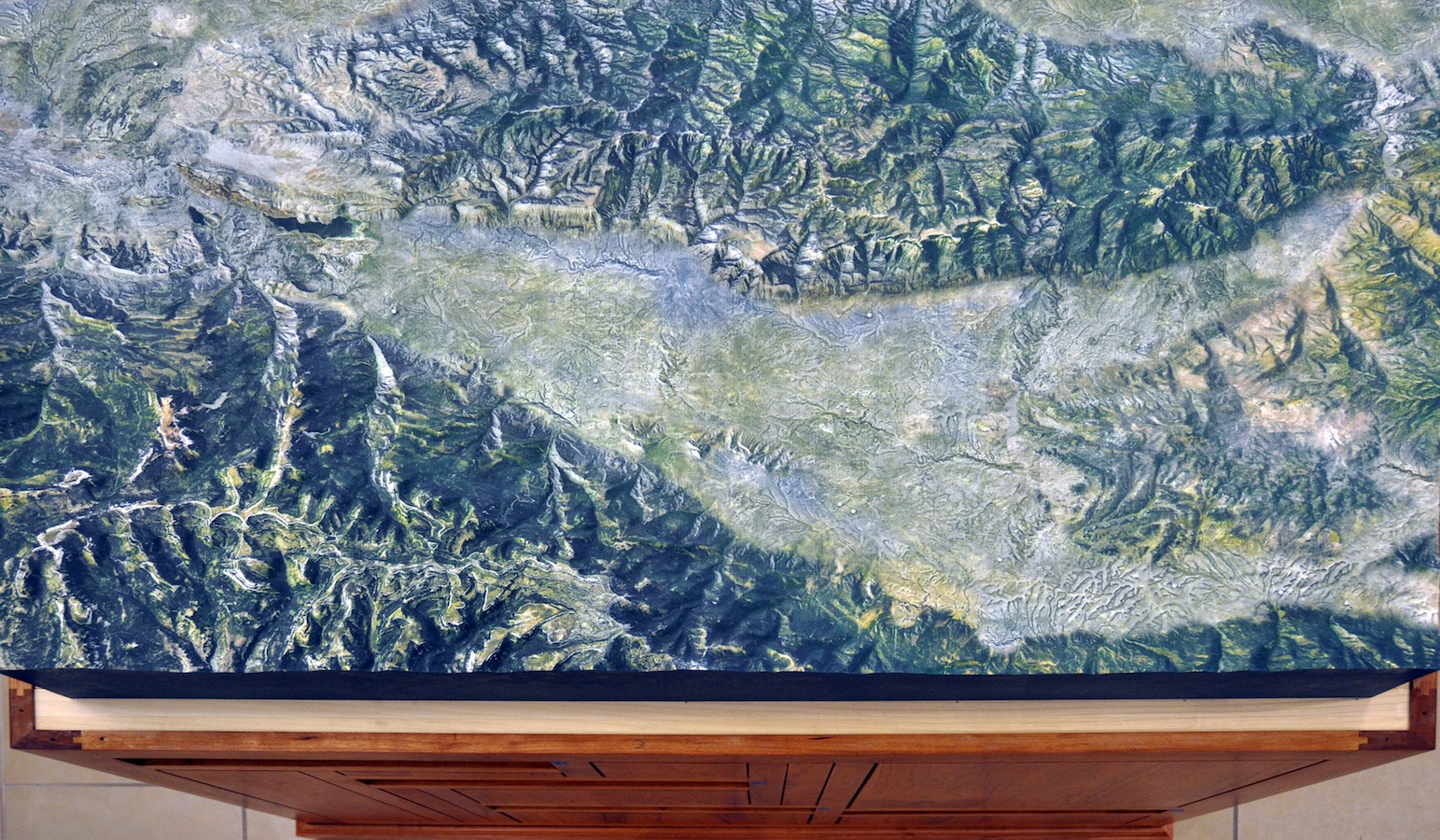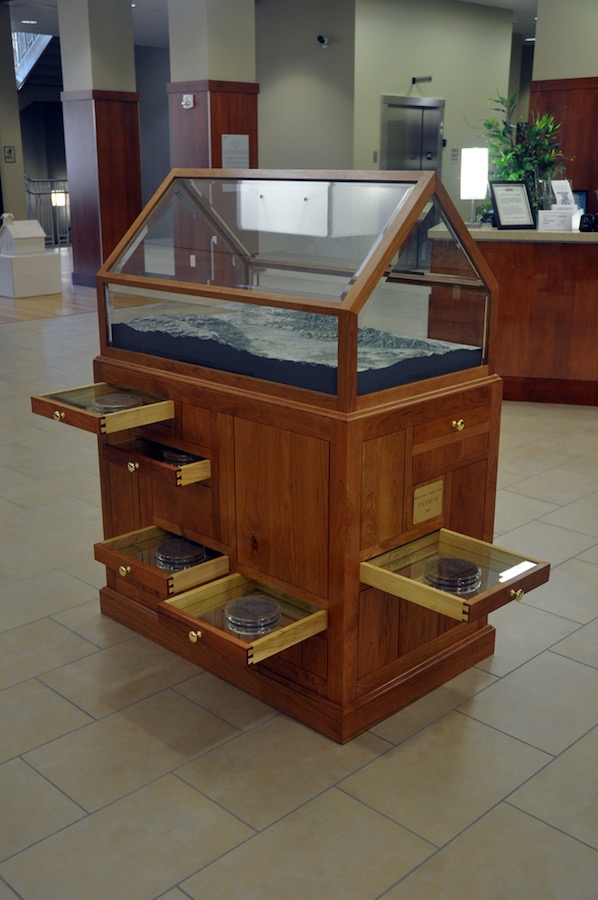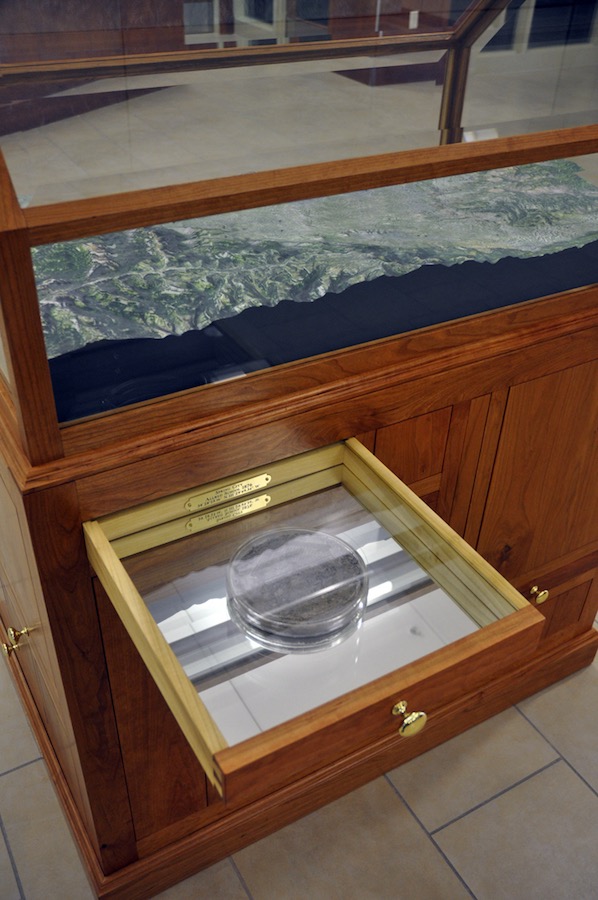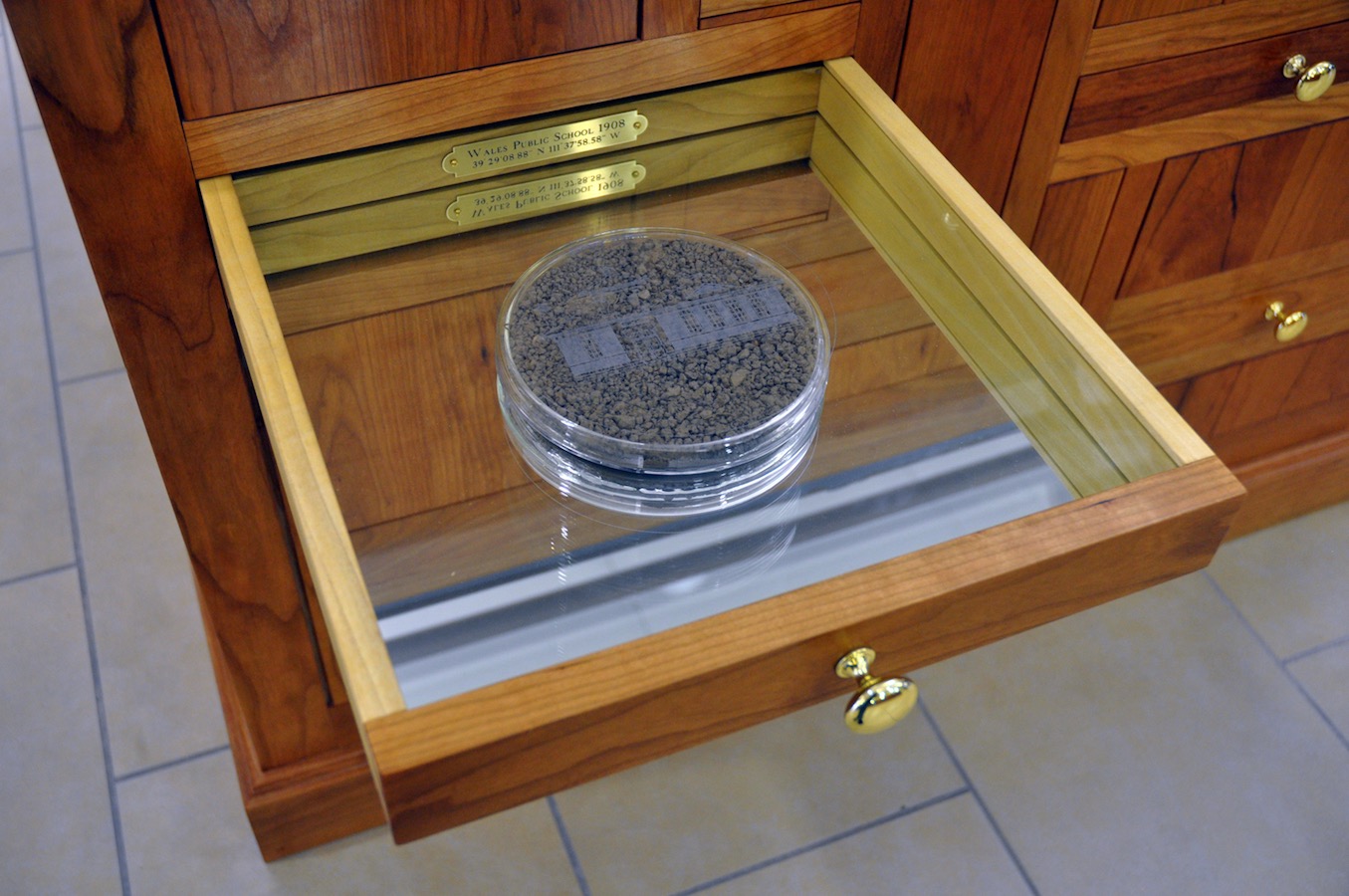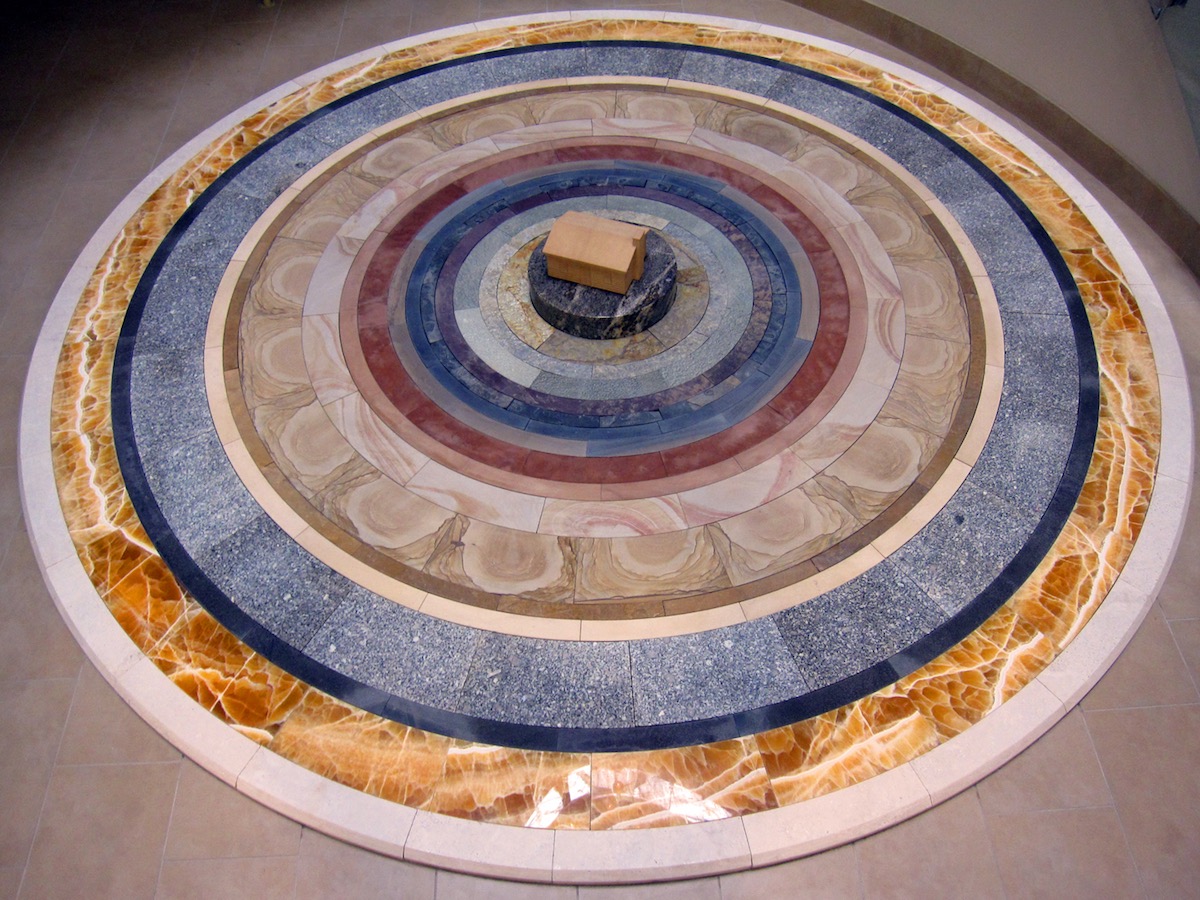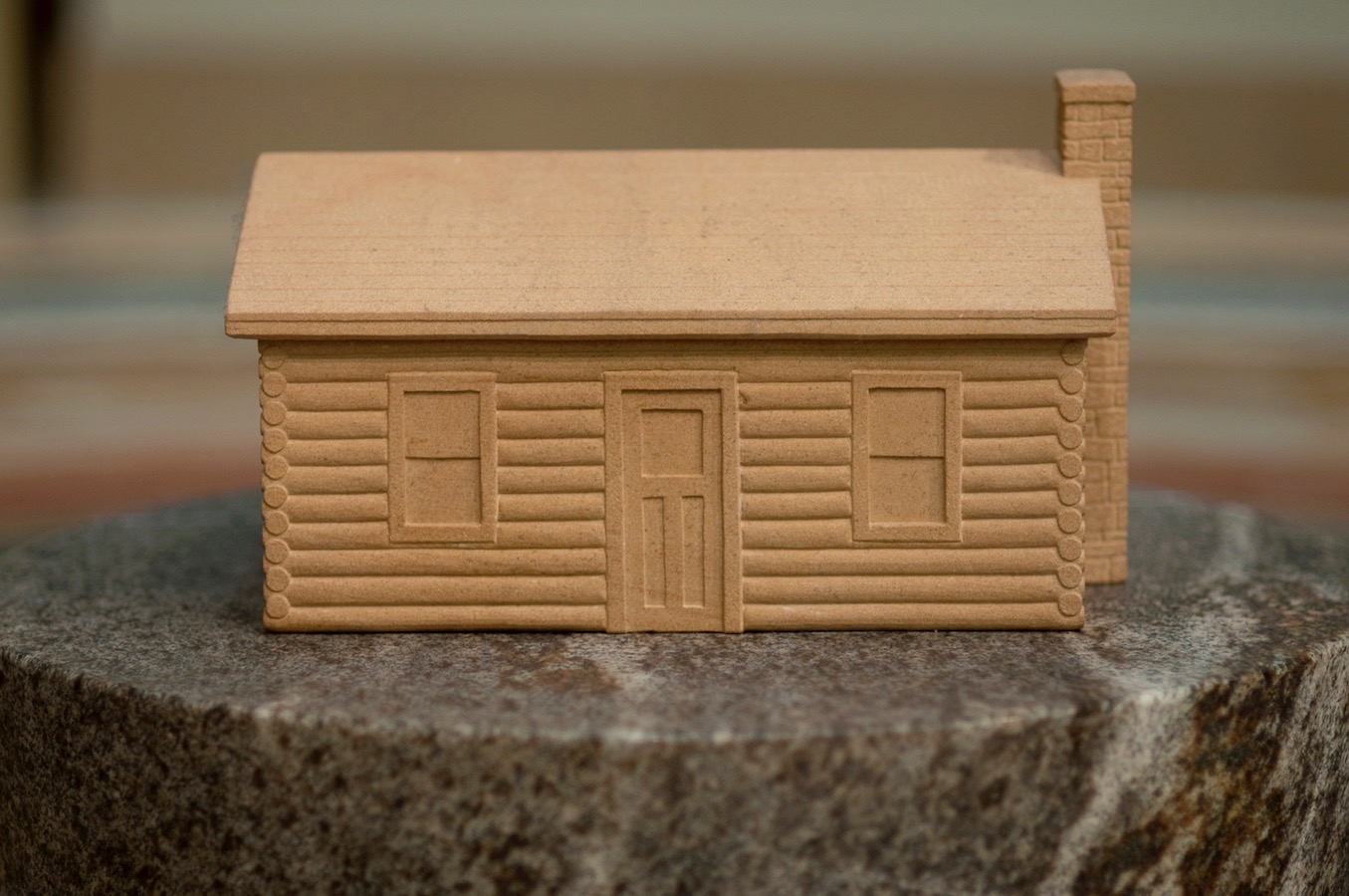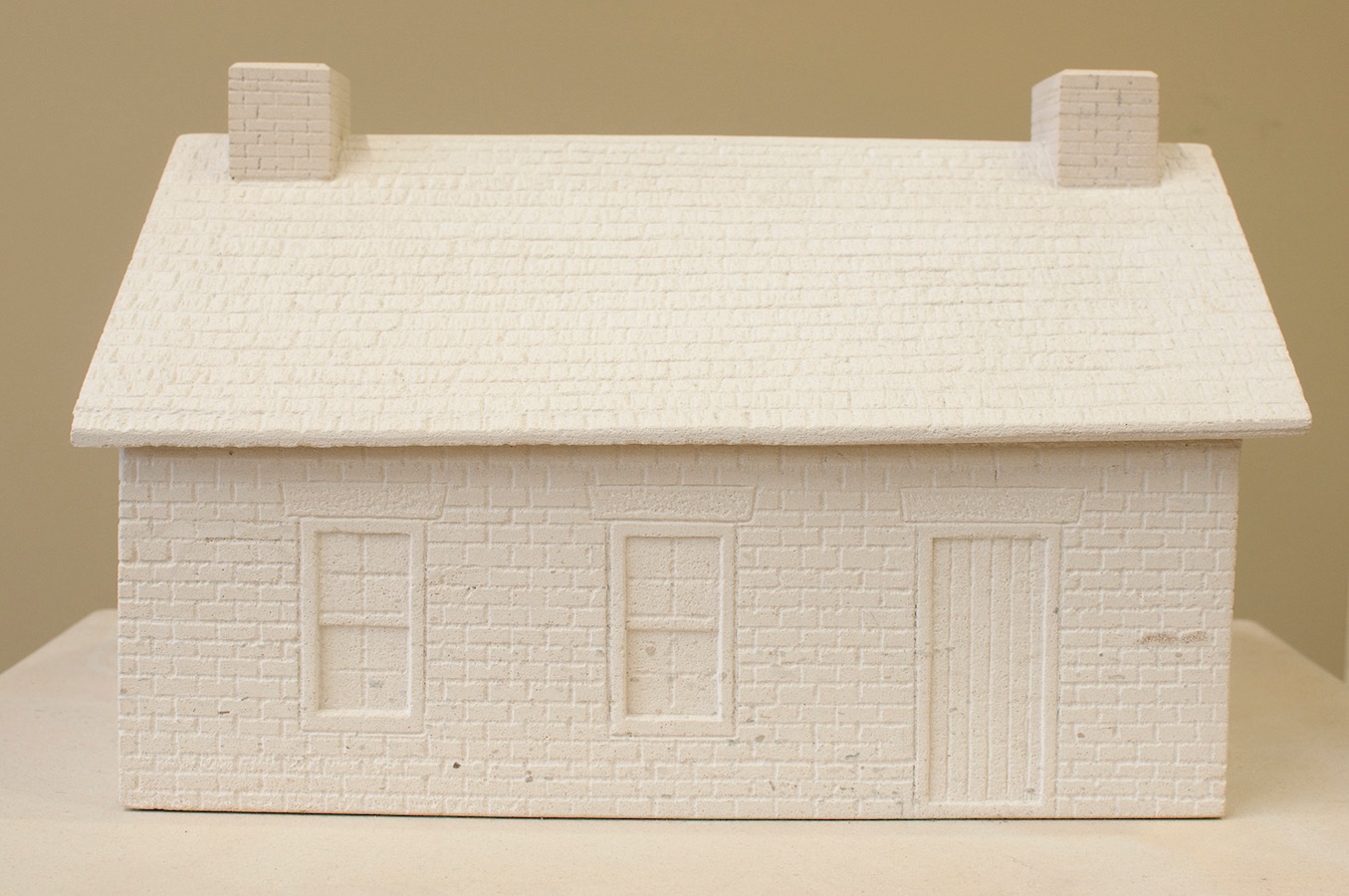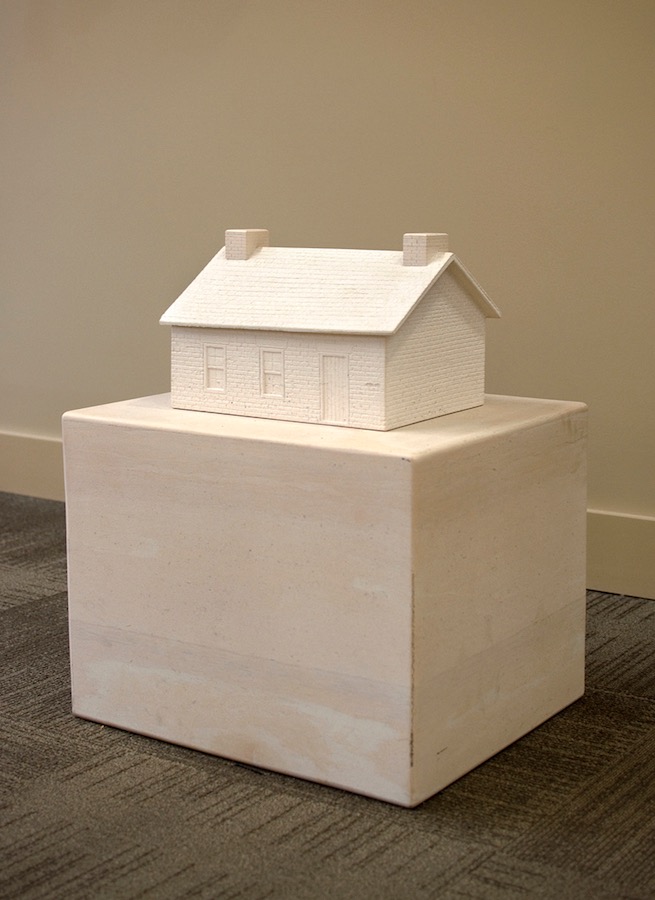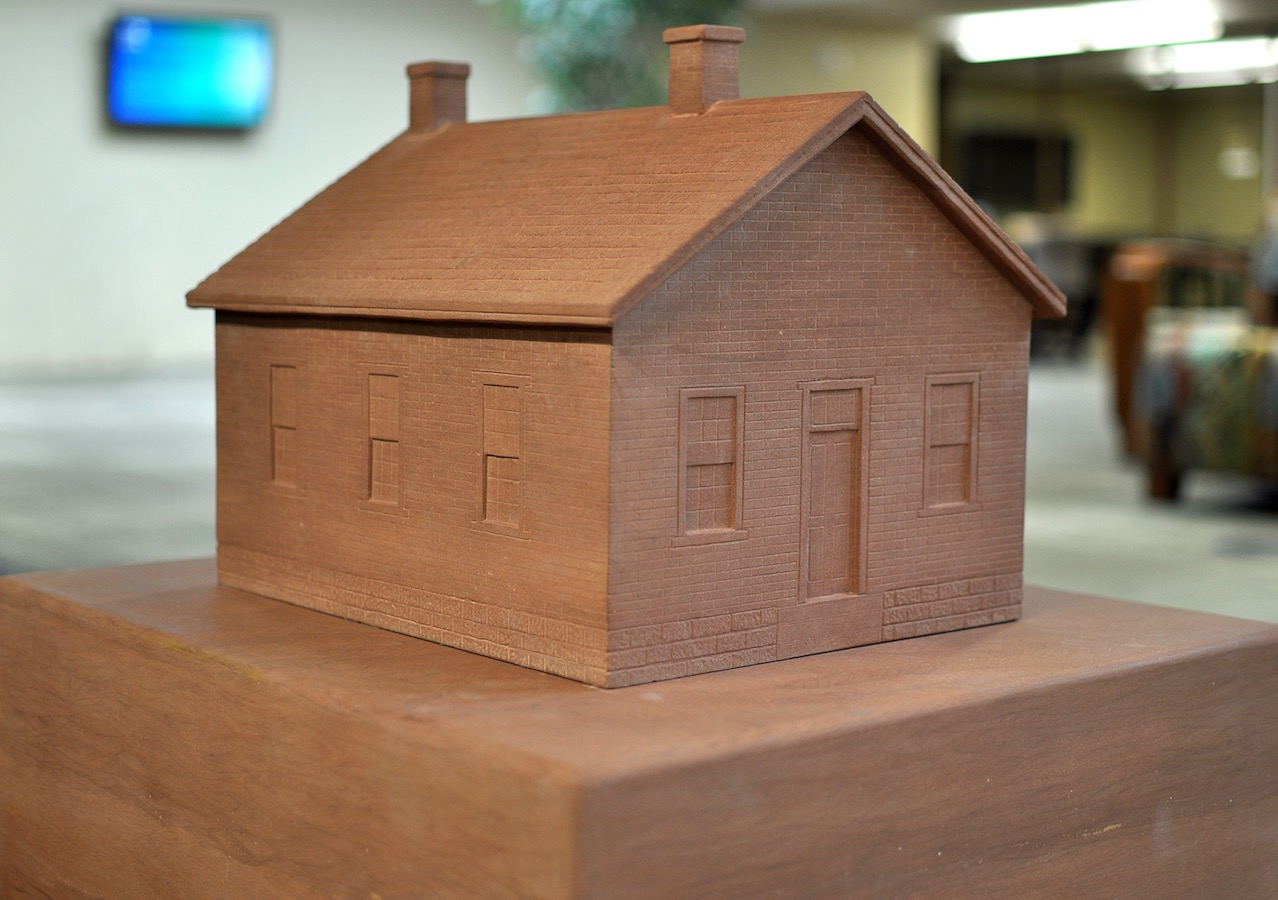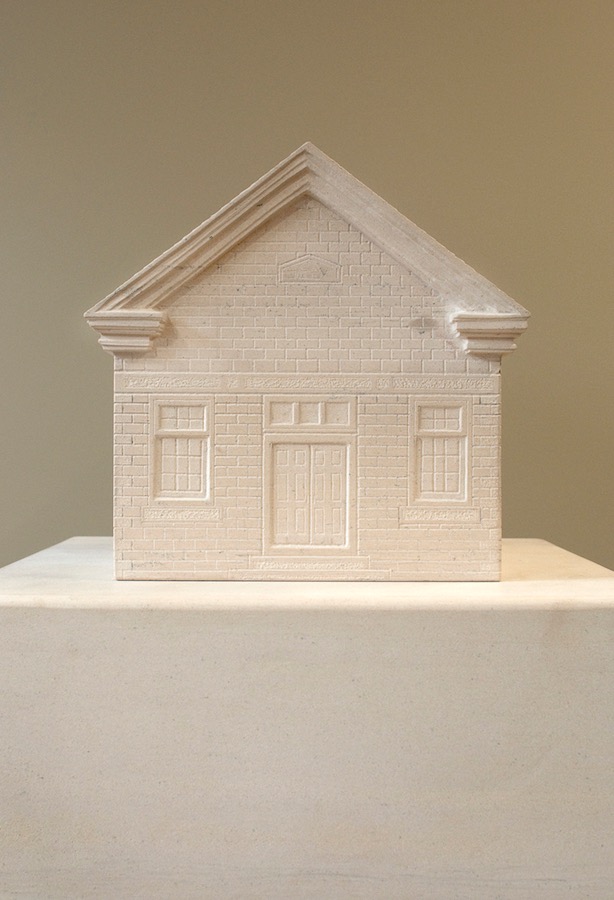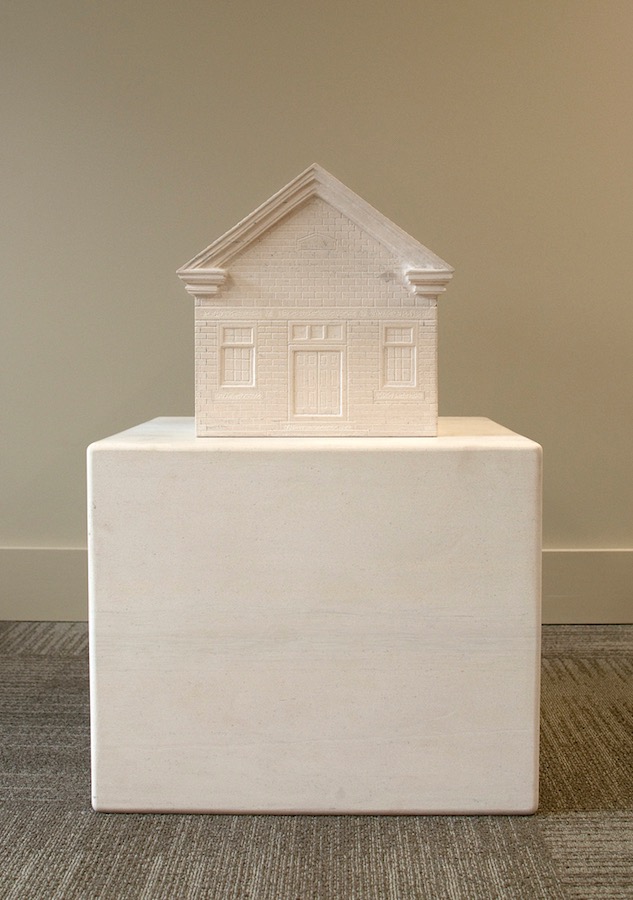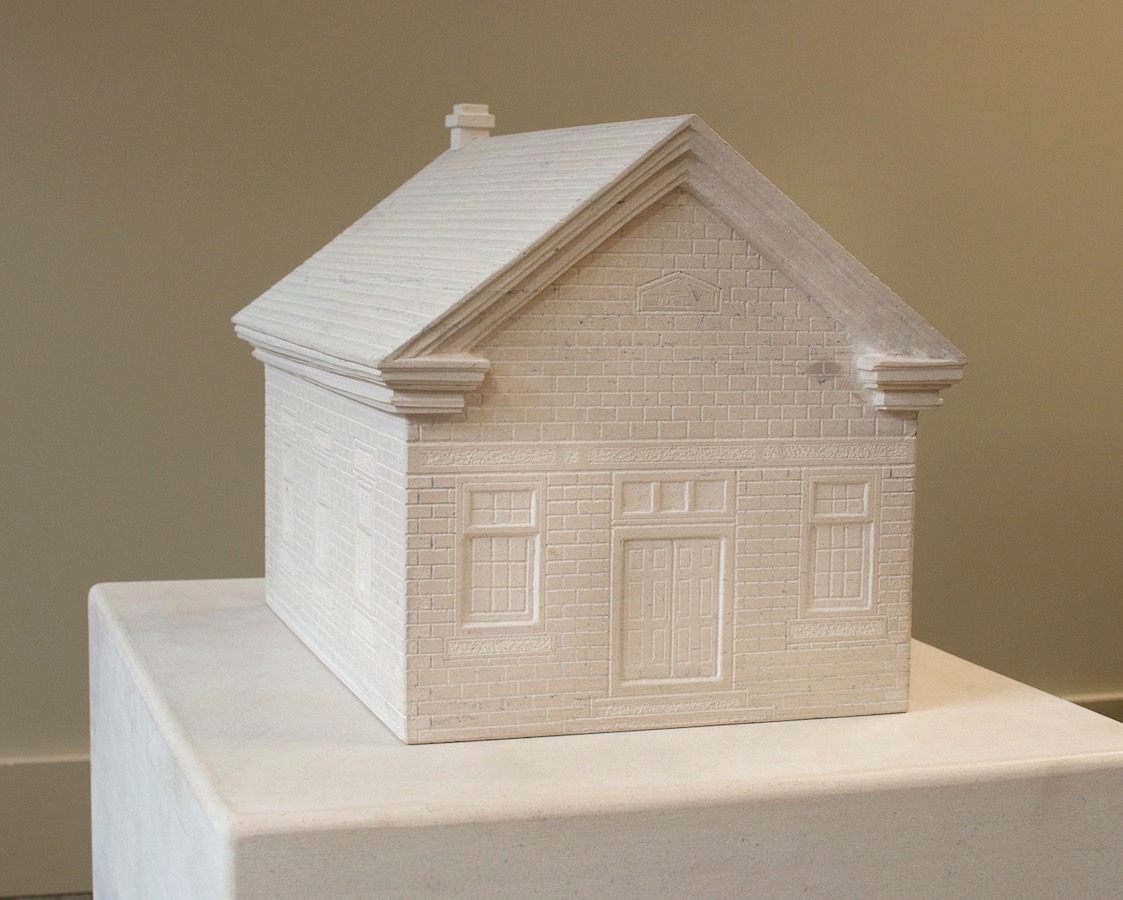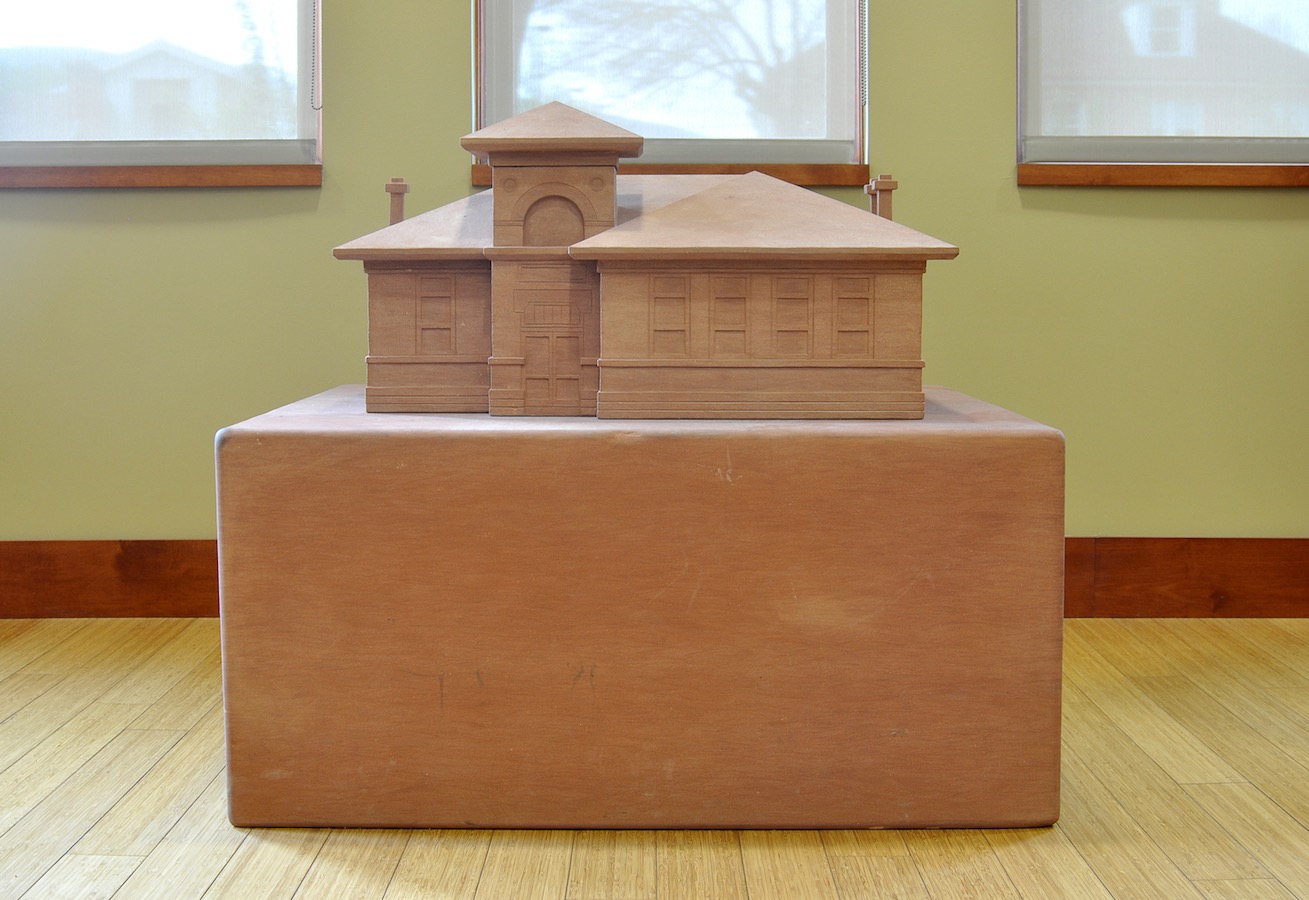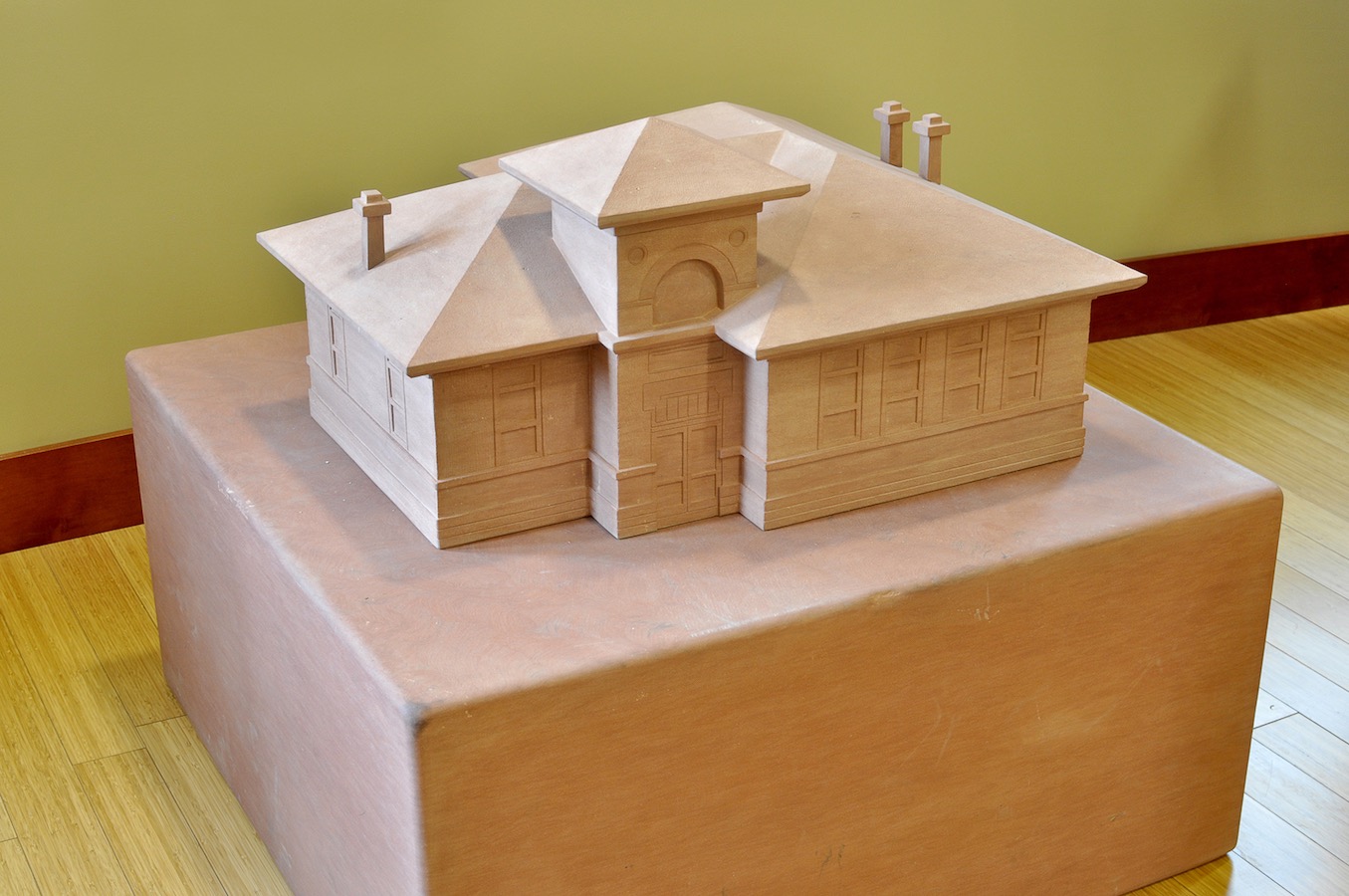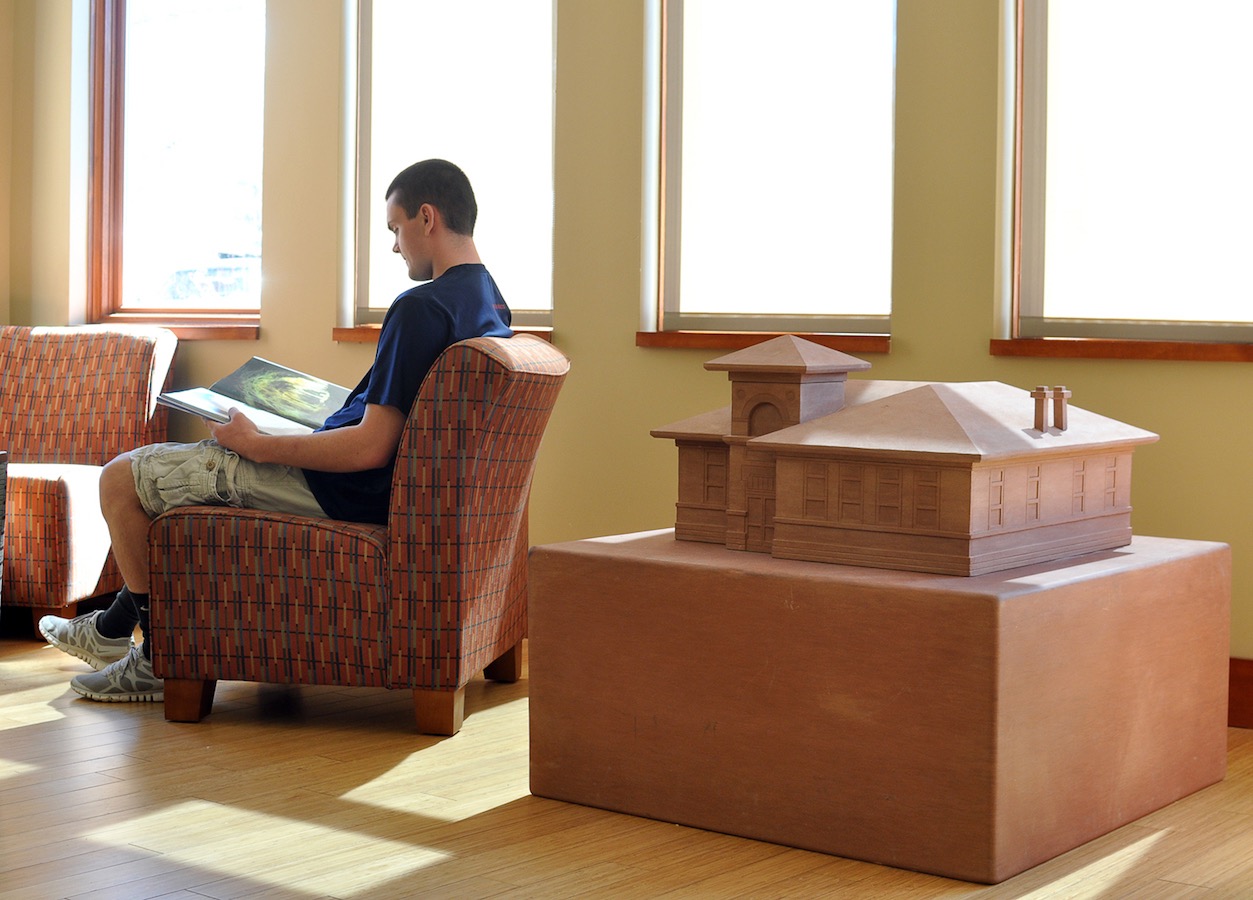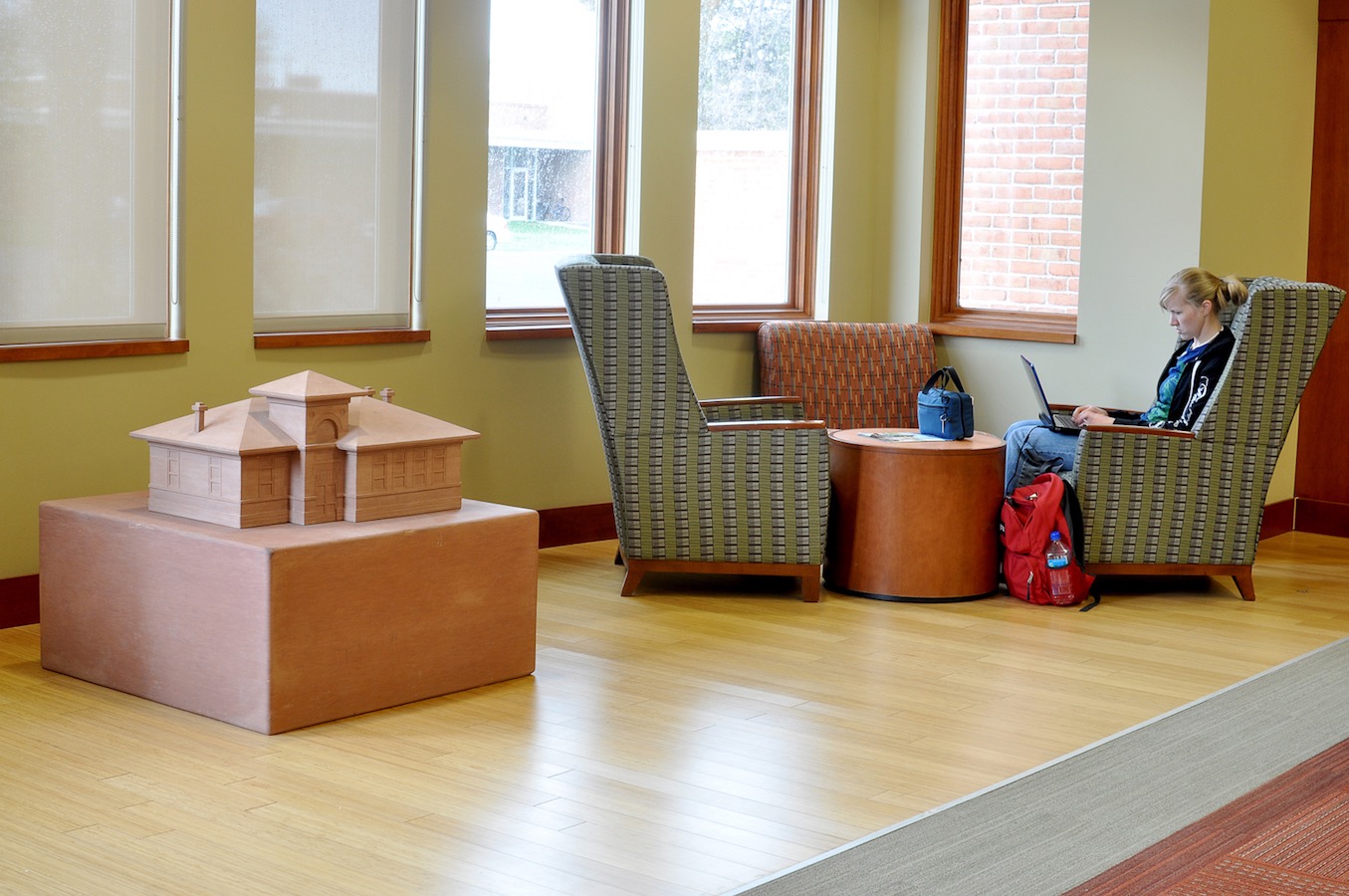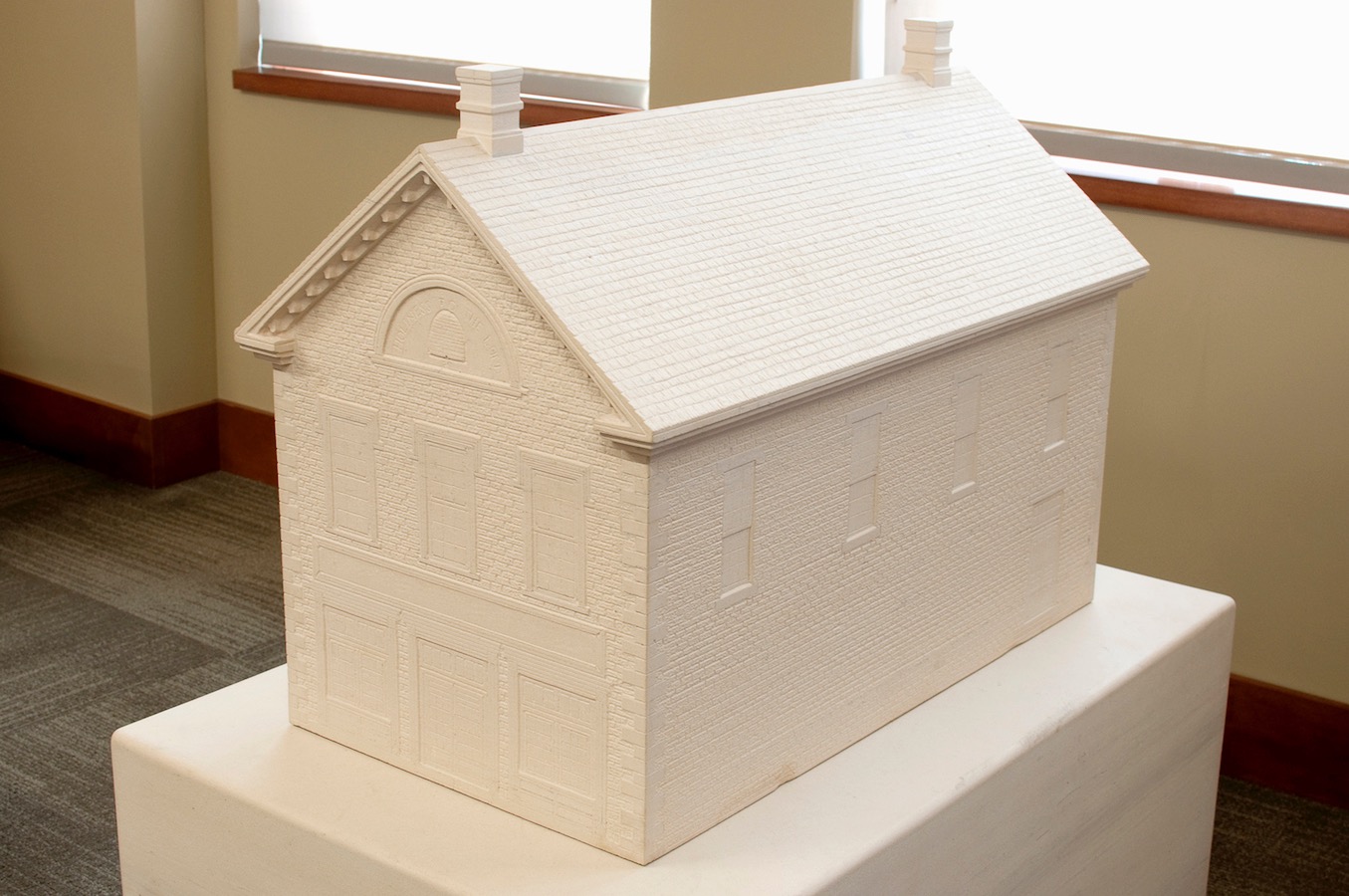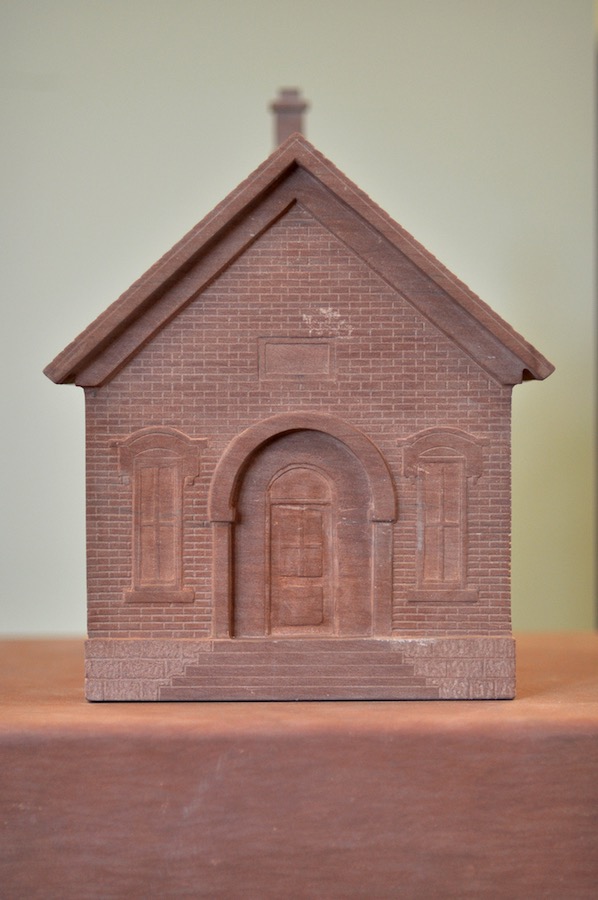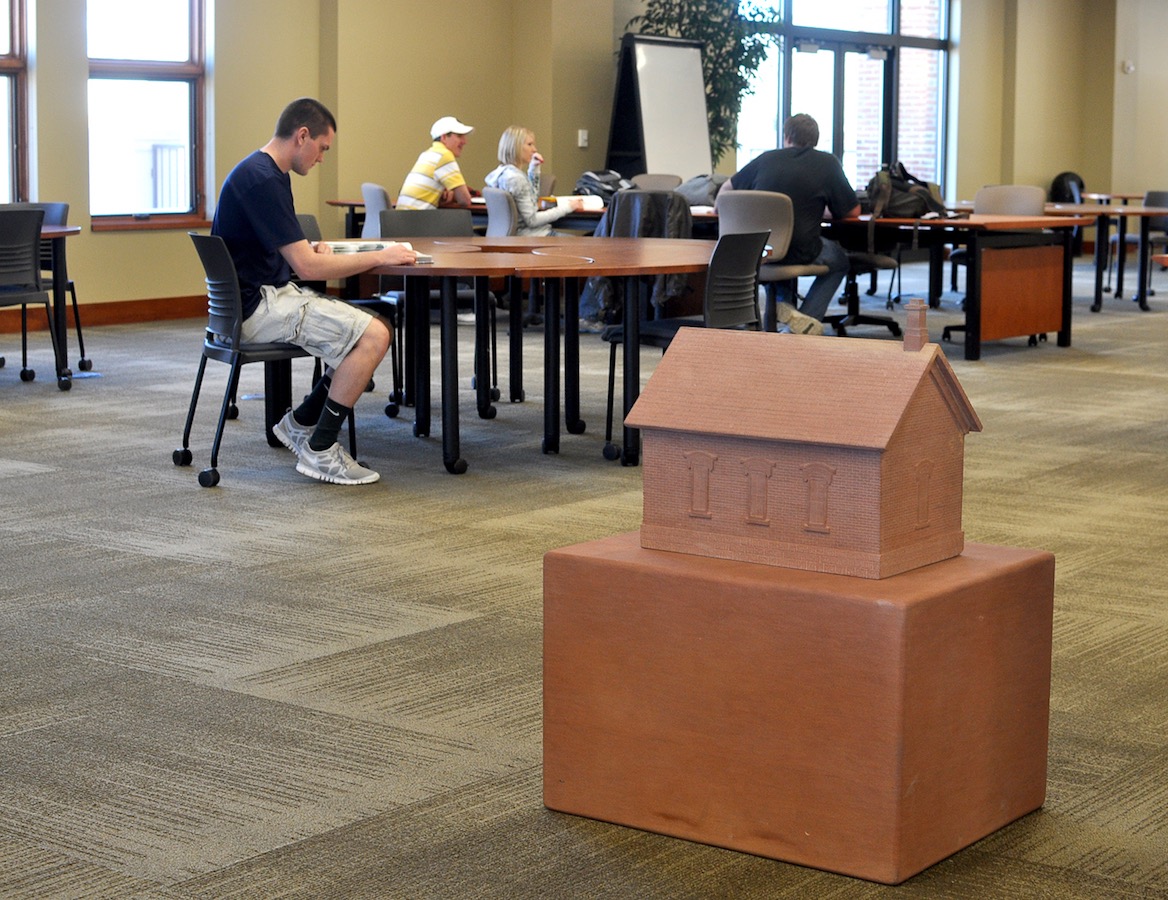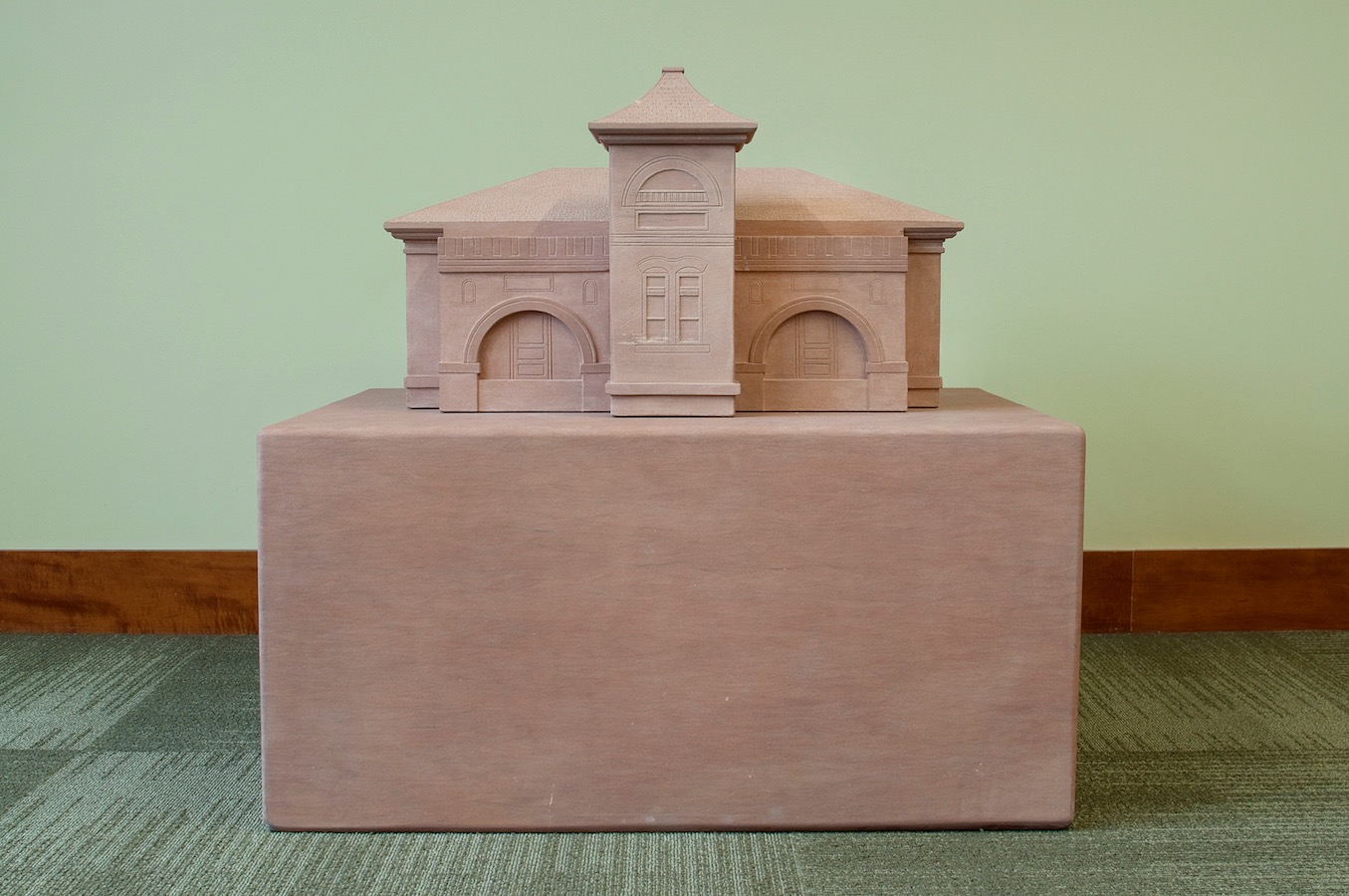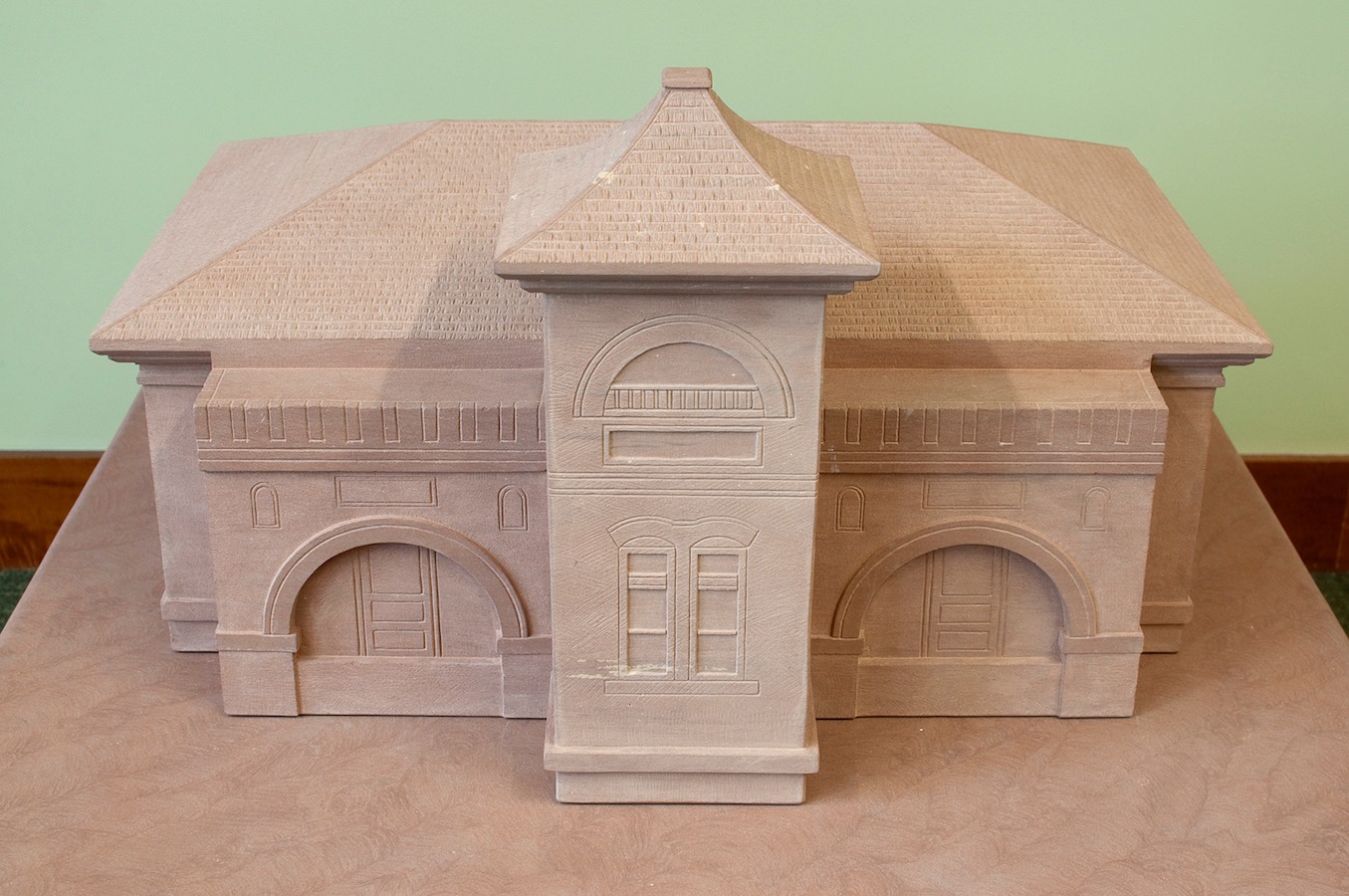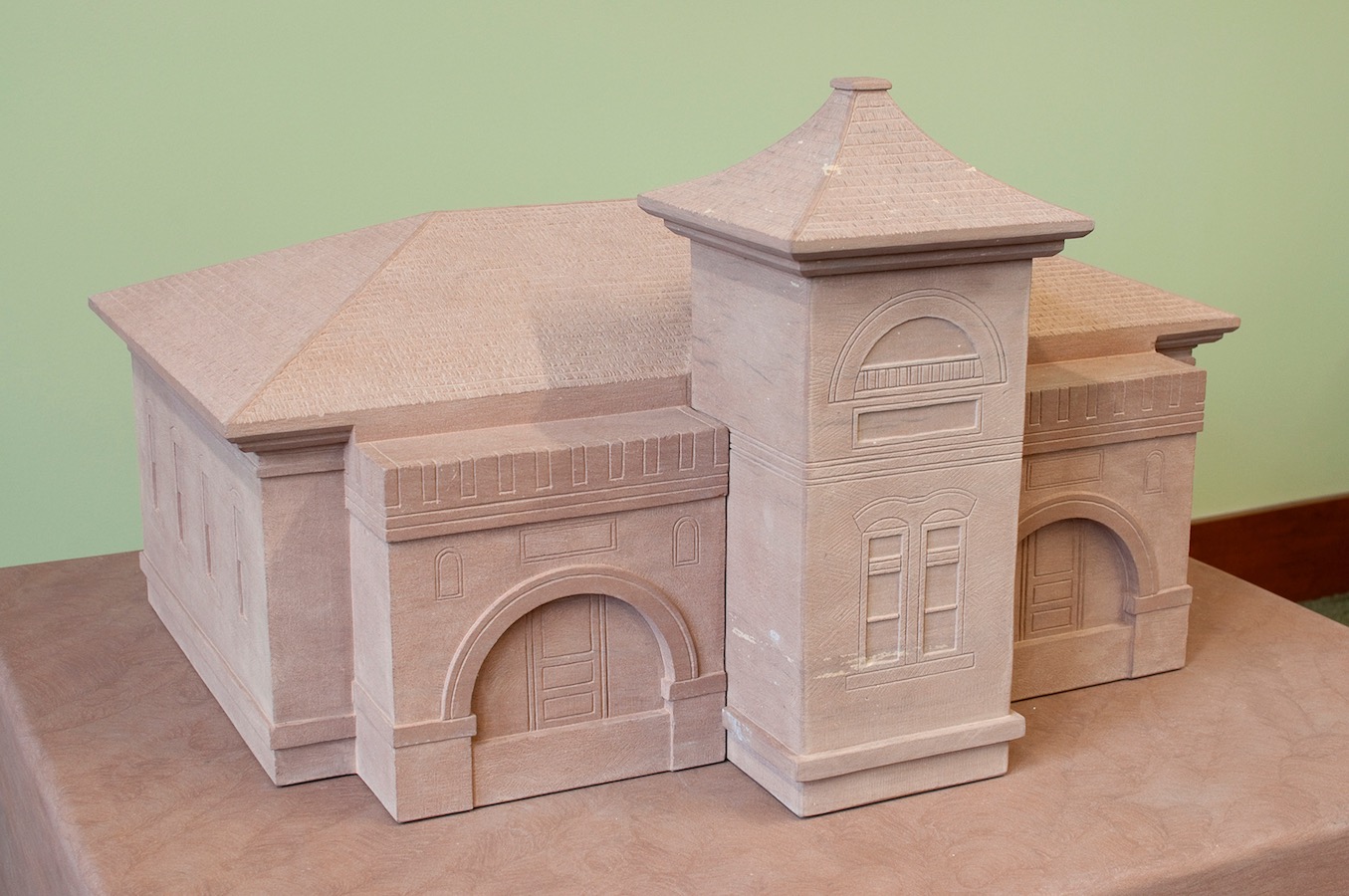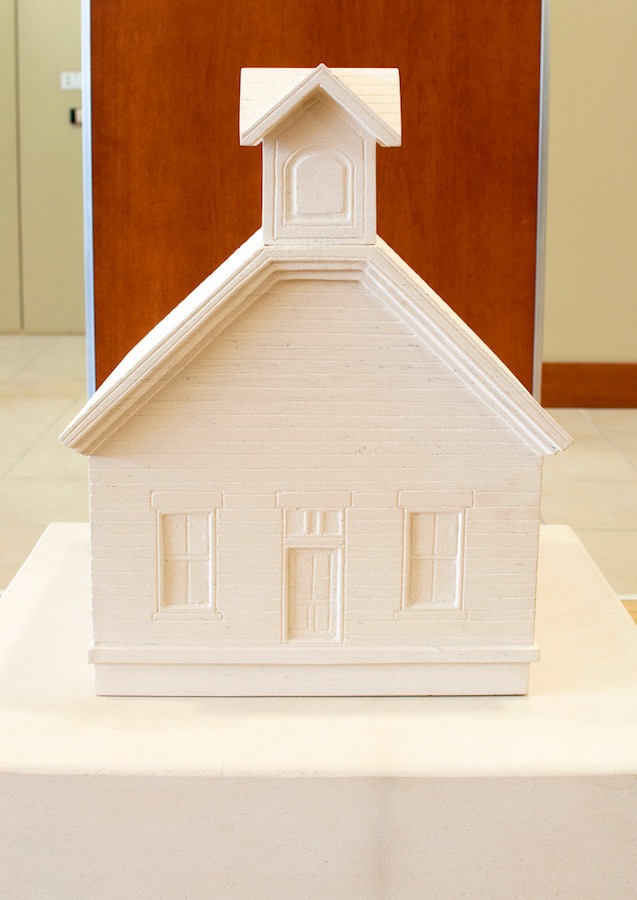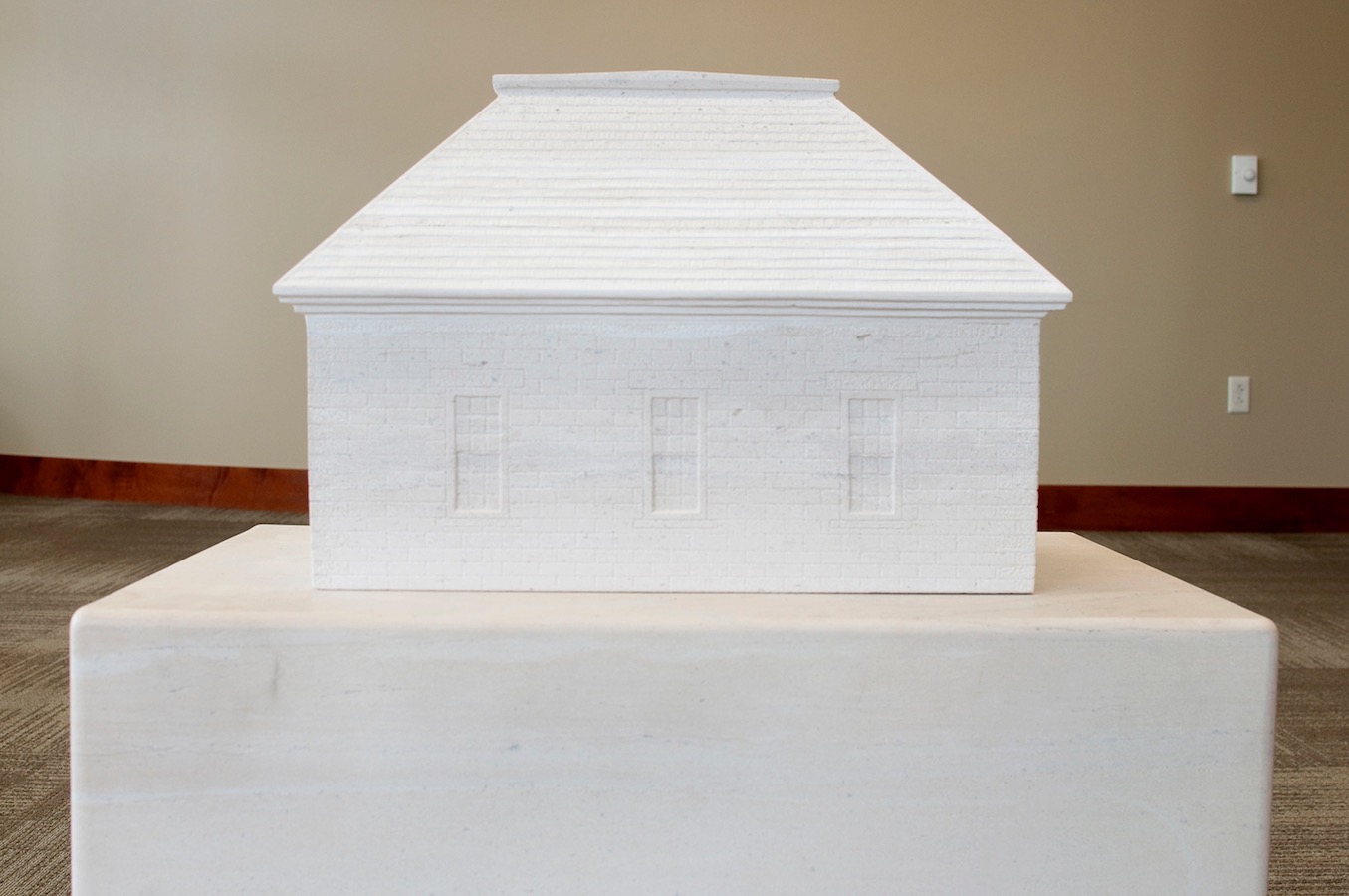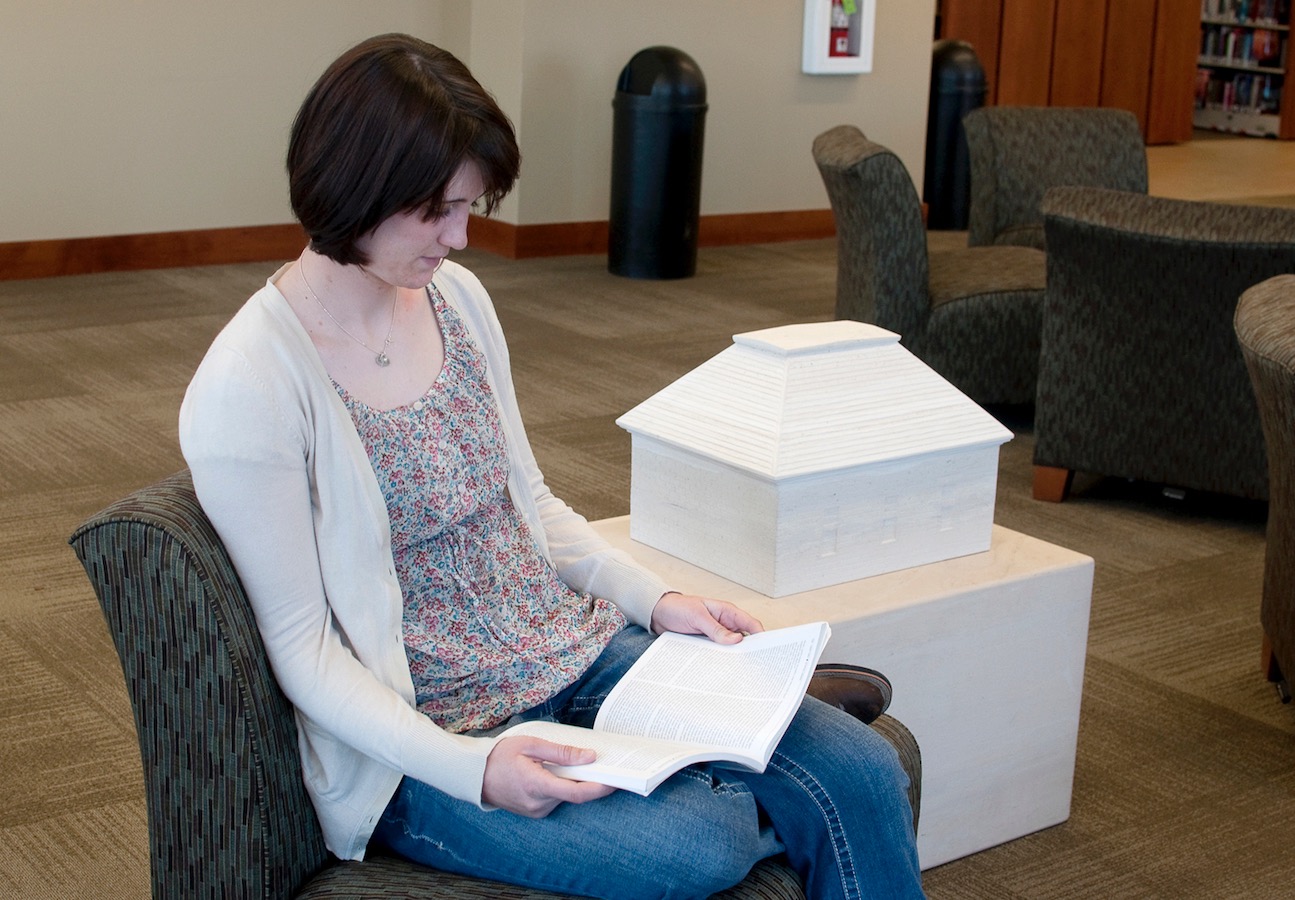Fathom
FATHOM
Karen H. Huntsman Library
Snow College, Ephraim, UT
Commissioned by:
Utah Arts Council, Public Art Program
Dimensions:
Multiple elements dispersed throughout a three-story, 55,000 square foot building
Materials:
Nineteen different types of indigenous Utah state stone, mortar, cherry wood, topographic map, pigment, glass, earthen samples, hardware
Fathom draws a line from the local to the infinite, and from source to potential, against the human measure of lived experience, physical existence and personal perception. The three elements of Fathom play upon each other and were conceived to provide a gradual, cumulative experience of discovery. The local topography of Sanpete Valley symbolizes the vessel into which humanity pours its aspirations. The very earth of the valley is the wellspring from which it rises; its geology crystallizes and records these transformations. Sanpete’s stone architecture exemplifies the human role, offering a specific geographic and cultural point of reference.
Offering both an epic, historical view of place as well as an intimate point of reference for the library’s daily patrons, Fathom evokes the dramatic scope of time past, the legacy of humanity in Sanpete County, and the vitality of the present moment.
Elements
1. The Key (Topographical Map and Cabinet)
As patrons enter the library, they encounter a classical vitrine, reminiscent of a 19th century museum case. Within it, a precise three-dimensional model of the Sanpete Valley echoes the surrounding landscape. A series of faceted gems scattered across the topographic map mark the sites of historic schools. Supporting the case, a finely crafted cabinet of drawers opens to reveal earthen samples, each representing a corresponding historic Sanpete Valley school building. The Key offers both macro- and microscopic perspectives of time and place.
2. The Specifics (Stone School Buildings)
The geology of Sanpete Valley has been celebrated and transformed through a singular cultural phenomenon: the oolite and sandstone architecture that distinguishes the area. Modeled after actual structures of historic area schools, a series of twelve small (9.5″-22.5″ high) hand-carved solid stone buildings are distributed throughout the library, representing a cross section of local architectural history.
3. The Locus / Rock Record (Stone Floor)
Set into the floor at the base of the library’s spiral stair, a rich variety of native Utah stone laid in concentric bands form a large, circular disc (13′ D). The exquisite stone medallion displays the geological wealth of Utah, as the stones progress in chronological order, indicating the vastness of time. Suggesting the ever-expanding rings of a growing tree or a stone dropped into water, the Locus represents the wellspring of knowledge.
Fabricators
Masonry/Stonecarving: State Stone, Murray, UT
Cabinetry: Dale Peel, Mount Pleasant, UT
Topographical Mapping: STM, Fillmore, CA
Jones | Ginzel
Studio Manager:
Diane Roehm
Architectural Assistants:
Jihan Lew, Henry Lyon, Camila Morales, Sonia Smythe
Research Assistants:
Michael Scott English, Olivia Fu, George Hoffmann, Violet Lynch
Project Consultants
Architectural Historian:
Allen Roberts
Geologist:
Renee Faatz
Special Thanks
Jim Glenn, Utah Arts Council, Public Art Program
Jon Ostler. Director of Libraries, Snow College
Bob Robinson, Graymont Mining and Geology
Andrew Rupke, Utah Geological Survey
Scott Wyatt, President of Snow College

